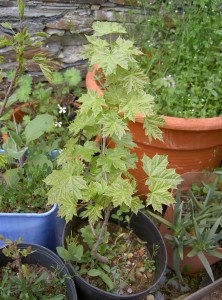
As you can imagine, the costs of running a project like this do stack up, so we welcome donations. One of the simplest ways for our supporters to see where their money is going is to donate to our tree project. Trees are essential for the regeneration of this site, and we need an awful lot of them! Whilst we propagate as many as we can ourselves, this takes time. With your donations, we are able to speed this process up by purchasing trees from local nurseries.
Please make your donation using the PayPal button in the left sidebar.
This is intended purely as a guide so that you can see at a glance how your donation could be used. Please feel free to tell us if there’s a specific type of tree you’d like us to plant on your behalf.
At the moment we are concentrating our efforts on the areas closest to the house and around the campsite, and we’ll gradually extend this up into the existing predominantly pine forest as time and resources permit. Our neighbours tell us that our open field was once a fruit orchard and market garden, and with this in mind we’re keen to replace as many of those fruit bearing trees as we can.
…………………………….
Apple – We’ve currently got trees of a late and an early fruiting variety planted. We make lots of jams and preserves, and apples make a fabulous base for them.
Pear – At the moment, the only mature tree we have on the lower part of the property is a pear tree. There are some root shoots appearing from trees which were destroyed by the previous owner, and , as with the apples, we’ve planted some early and late varieties in our new ‘orchard’.
Plum – We’ve currently only got one plum tree, a gift from PDC participant Pedro who bought it for us in honour of his girlfriend Filipa.
Cherry- Personally, my favourite fruit and I’d cover the place with them given the opportunity! We planted quite a few on fairly poor soil below our beehives a few years ago. Sadly we lost some in the summer of 2012 when it was so dry that we couldn’t keep up with the watering required. Those that remain are doing well, but we’d like to replace those that we lost. It’s a beautiful coloured building wood as well as producing a fruit that I could eat all day.
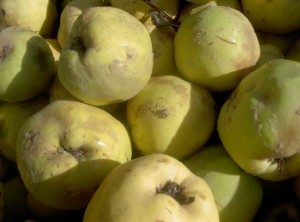
Quince – Known as marmelos in Portugal, these very hard fruits look a little like a cross between an apple and a pear and are what the Portuguese marmelada is made from. They are commonly used as the rootstock for grafted pear trees, and the quince that we have here currently are all that remains of a few pears that we planted but were decimated by marauding goats.
Persimmon – People either love these or hate them! We like them as an ingredient for preserves.
Olive – The olives we planted around the kids’ climbing frame are doing well and we’ve had a small harvest. We’d like to plant more by the road where it’s fairly dry. They’re evergreen, so although they’re slow growing, eventually they’ll serve as a wind break and privacy screen.
Fig – Figs thrive on poor, stony soil. Unfortunately we’ve not had huge success with the figs we’ve planted so far, but they’re reasonably easy to grow from cuttings. The trees we’d like to purchase would be different varieties.
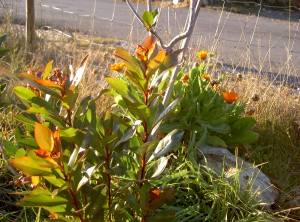
Arbutus / Strawberry tree / Medronheira – A native to this area which is arguably one of the ones we’re planting with the most uses! Produces a sunset coloured fruit which makes exceptional alcohol, either drunk straight or used to make fruit based liqueurs, and can be used in jams. It’s evergreen and can be pruned to be either low and bushy or grown taller as a tree. This makes it great as a windbreak tree, and we’ve started to create a row of medronheira all along the road. Goats enjoy the prunings (and the trees too, given the opportunity!). Individual trees are very cheap, but we need 100+ so the cost adds up!
Mulberry – One of my favourite looking trees. Has the potential to become massive, with beautiful blossom and small raspberry like fruits. There’s a big price difference between grafted and ungrafted trees, but grafted ones should be considerably more productive. Said to be a companion for vines. We have two planted already, in memory of a couple of our dogs who were lost, but we’d like at least one more to shade the shower area.
Almond- We’ve some planted on the way to the compost loo, and this line needs extending.
Pineapple guava / Feijoa – A really lovely looking evergreen which we’re using as a productive windbreak tree between the vines and the orchard. We’re gradually extending the line, bit by bit. Did you know that you can eat the flower petals? They’re really sweet, but of course scoffing all the flowers doesn’t do much for fruit production!
Citrus – A little exposed in winter currently, but there’s a couple of spots which are warmer and more sheltered where these should thrive. As citrus trees don’t grow outside in our home countries, they still have the power to excite us!
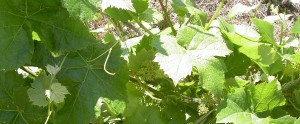
Vines – Not a tree, I know, but really important for our future plans. As well as producing a versatile fruit which is essential for our winemaking activities, vines produce shade very quickly in the summer months when we need it most and die back in winter when we appreciate the sun. Depending on our plans for them, some vines can be reproduced from cuttings. We do need to buy some specific named varieties for the winemaking.
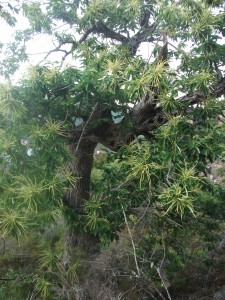
Lime – I mean lime blosson, tilia in Portuguese, not the citrus here. A large and really beautiful tree with a gorgeous smell when flowering, it sends bees wild! The blossoms make a lovely tea too.
Walnut – Grafted trees are more expensive, but worth the additional cost in terms of future output.
Sweet chestnut – It’s encouraging to see sweet chestnuts springing up where we have cleared pines and mata, but these have self seeded and won’t produce many or large nuts. We’d like to buy some grafted trees for nut production. Sweet chestnuts play a pivotal role in the autumn magustos and we like to make chestnut flour which is sweet flavoured and hearty.
Leave a Reply